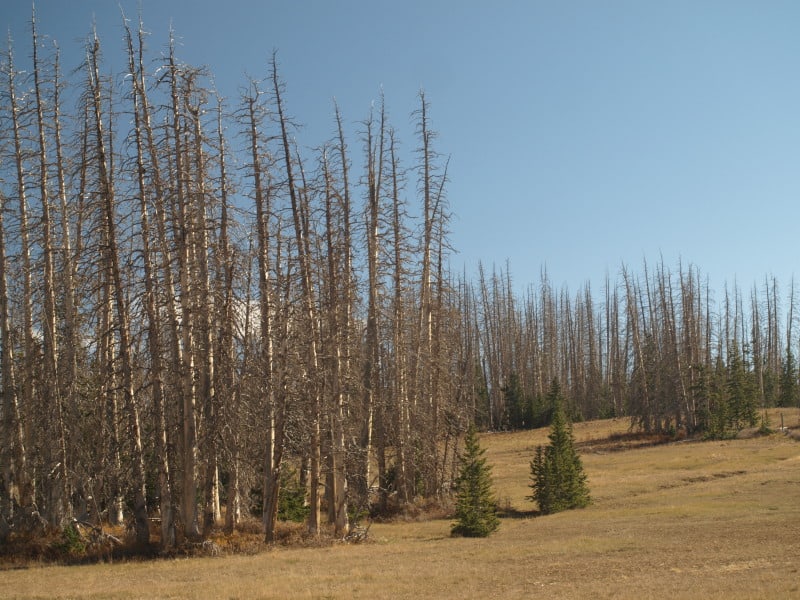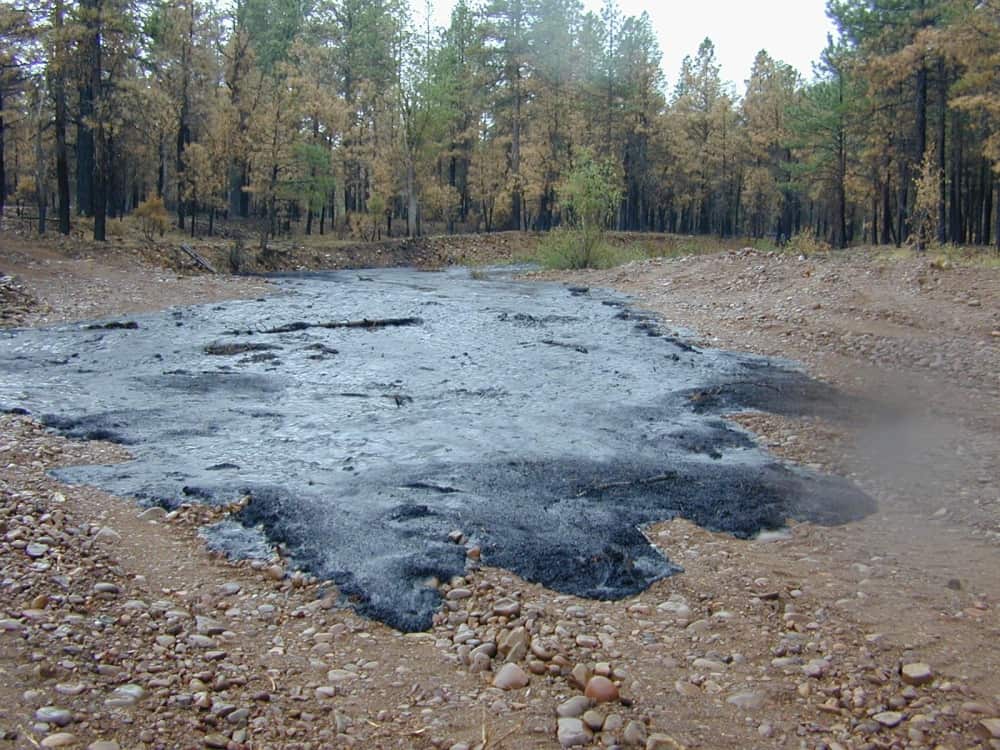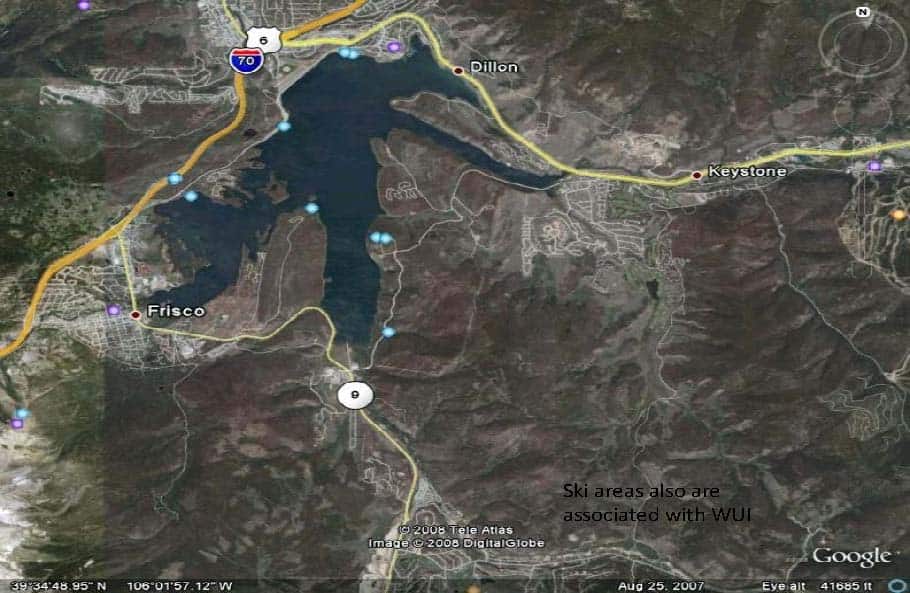
This is from E&E News here.
Below is an excerpt:
Increased home building on private lots near public forestland could push firefighting costs to levels that nearly consume the Forest Service’s annual $5.5 billion budget, but there is still time to avoid such a disastrous scenario, a new report says.
The report, released today by Bozeman, Mont.-based Headwaters Economics, used 2010 Census Bureau data to determine that more than 19,000 square miles of private land near public forests across the West consists of undeveloped but highly sought-after parcels.
If only half these lands within the so-called wildland-urban interface (WUI) were developed, federal firefighting costs could balloon to as much as $4.3 billion, or most of the Forest Service’s annual budget.
Oregon, with more than 5,100 square miles of undeveloped land in the WUI, is most at risk, followed by California (3,800 square miles) and Washington (3,200 square miles), according to the report.
“Our analysis shows that costs for firefighting in the West could grow tremendously in the coming years,” said Ray Rasker, executive director of Headwaters Economics. “The combination of longer, warmer and drier fire seasons — together with more and more nearby homes — will result in much higher expenses for taxpayers along with more difficult and dangerous fire seasons for firefighters.”
Rasker said a key goal of the report is to urge federal policymakers to take steps to shift the responsibility for protecting these homes to the local counties and municipalities that permitted the development.
Among the solutions proposed by Headwaters Economics is mapping areas that are at “high probability” of wildfires and developing financial incentives for local governments to redirect development away from them. Another solution is to eliminate the mortgage interest tax deduction for homeowners who build new homes within the WUI.
“The fundamental challenge is that those who permit and build homes on fire-prone lands — county commissioners, developers and homeowners — do not bear their proportional cost of defending these homes from wildfires,” he said. “We would see a much different pattern of development in the West if the federal government shifted the financial responsibility of defending homes to local governments and those who build homes on fire-prone lands.”
The report by the nonprofit research group comes on the heels of a 2012 wildfire season that ranks among the most expensive in Forest Service history. The Department of Agriculture’s Office of Inspector General has reported that protecting private property from forest fires accounts for at least half of all firefighting costs.
A Forest Service spokesman in Washington, D.C., did not respond to requests to comment for this story.
But the report drew some sharp criticism from Andy Stahl, executive director of Forest Service Employees for Environmental Ethics in Eugene, Ore.
“I doubt that wildfire risk will ever be a driving policy consideration when it comes to local land-use decisions. It never has been. So I’m skeptical it ever will be,” Stahl said.
The reason, he said, is that the risk to homes from wildfires is simply not that great.
“Why isn’t the insurance industry requiring higher [insurance] premiums when building in fire plains as it does when building in flood plains? The answer is that, actuarially speaking, the risk isn’t that high,” he said. “The risk of losing a house to fire is much higher associated with ignition sources from inside the house, such as a poorly installed wood stove, bad wiring. The risk is much, much higher from those traditional home immolation sources.”
The focus, he said, should remain on insuring that homes built in the WUI are built correctly to withstand fires and that homeowners are required to clear bushes and other nearby vegetation that can spread a wildfire.
In Oregon, for example, he said the state has laws in place requiring homeowners to reduce brush and to take over fuel-reduction treatments or risk having to pay the bill for the state to suppress a fire, thus shifting the financial burden to “irresponsible” landowners.
He said concern about development in the WUI is “a surrogate issue” that’s “being used by those who oppose private land-sprawl.” He added, “Trying to use federal firefighting policy as the fulcrum or lever to change the way Montana or anywhere else does its local land-use policy is very much an uphill battle.”
Still, some states are beginning to take the issue seriously.
In Colorado, for example, where Headwaters Economics calculates there is more than 1,400 square miles of undeveloped land in the WUI, Gov. John Hickenlooper (D) recently signed an executive order creating a task force composed of state forest and firefighting experts, county and city representatives, insurance providers and homebuilders to study what should be done about growing populations near public forestland, among other issues (Greenwire, Jan. 31).
Note from Sharon: Andy was darn articulate on this, IMHO. I would only add that linking Hickenlooper’s task force and “reducing growing populations” is a bit of a stretch. But don’t take my word for it, here it is from the State horse’s mouth.
Also, the Colorado Roadless workers had many interesting discussions with different groups and university folk about mapping WUI. Let’s just say there are many different ways, which could conceivably yield different answers.
Again, this seems like a question of trade-offs. If our population is increasing, people have to build somewhere. If you live in dry areas, then wildfire is a risk. Sometimes I wish when people did studies saying “don’t do that, it’s bad” they would also say “do this instead, it’s better.”





